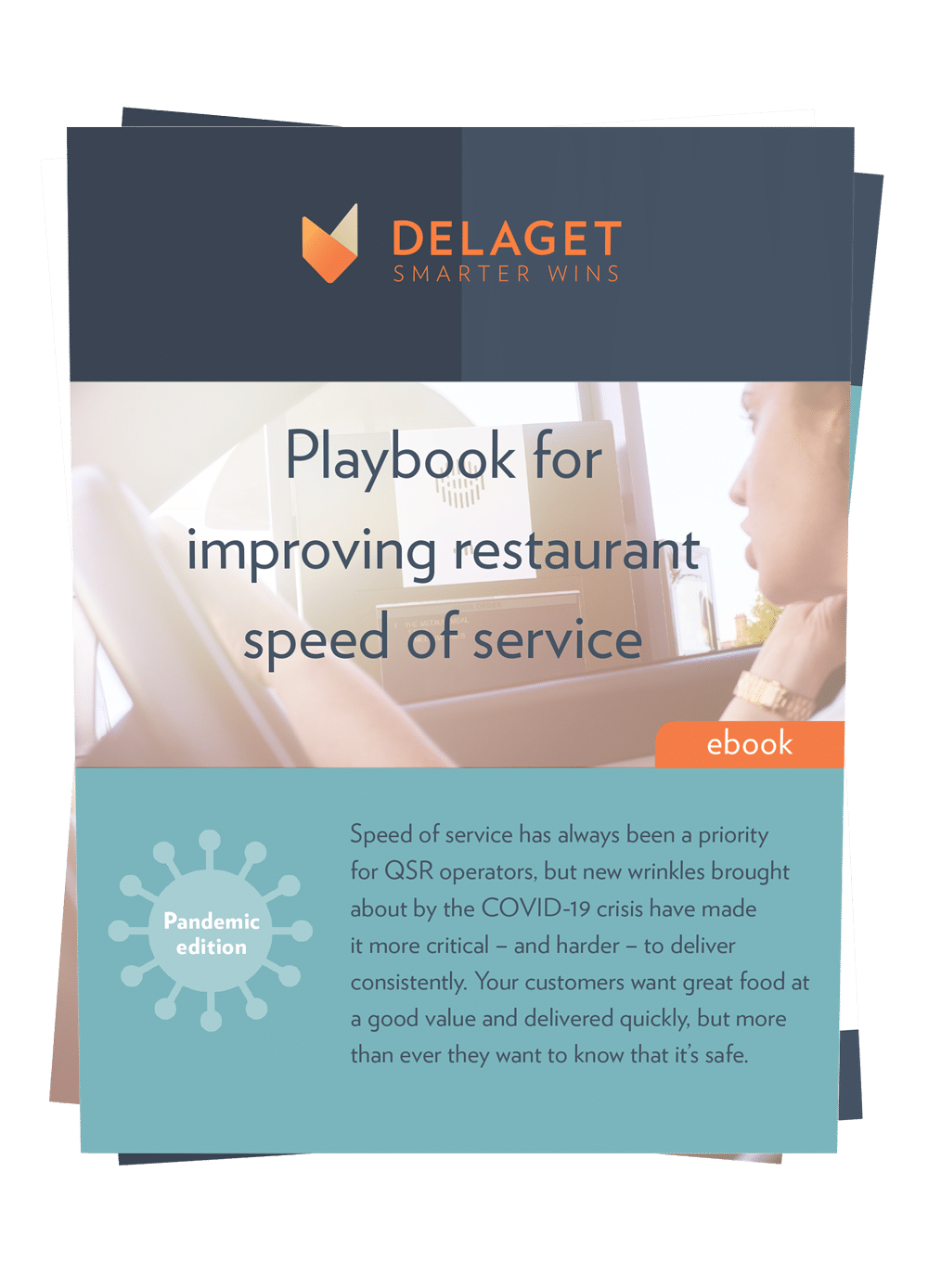Menu
Login
- SOLUTIONS
-
-
FRANCHISEES
-
FRANCHISORS
PARTNER VENDORS
-
-
-
- MARKETPLACE
- RESOURCES
- ABOUT
- SCHEDULE A DEMO
-



Speed starts with being organized and well-stocked, so you won’t have to slow down service to re-stock or – worse yet – run out completely. Sales forecasting also allows you to schedule correctly, with enough employees to handle the rush without wasting money on overscheduling. For the most accurate forecasts, follow these practices:
WEBINAR: 5 Keys to Successful Forecasting
Dedicate time every week to sales forecasting. This isn’t something that should be done at the last minute or when you’re in a rush. Put it in your calendar.
It’s critical to make sure your training program prepares team members to handle slow and busy days with grace and efficiency. Learning the ins-and-outs of your POS system is one of the biggest hurdles new employees face when starting out. Does your new cashier know how to enter a Double Venti Nonfat Decaf Iced Vanilla Double-Shot Frappuccino Extra Hot with Whipped Cream into the register? Do you want them to try to figure it out in the middle of a rush?
Here are some tips for any training program:
In particular, training makes the most impact on speed of service when you are closest to the customer – at the register and in the drive-thru lane.
Optimize your register techniques
Make sure your employees are focusing on fluid transactions. There are only so many things that can happen at the register – the customer might ask for a beverage or condiments, and then is probably going to make a payment using cash or a credit card. If you manage a burrito restaurant, a good percentage of your customers are going to ask for chips and salsa when they pay – your cashiers should anticipate these scenarios so they can respond immediately. Quick access to drinks and condiments is a basic necessity, as is the ability to quickly count change. If your cashiers are stumbling on these steps, get a more experienced employee to help them out.
WATCH: 5 restaurant cash handling best practices you can’t afford to miss
Similarly, make sure your cashiers are repeating orders back to customers. Repeating a customer’s order back to them can feel tedious, and many customers won’t even listen – they’ll just nod and say “yep” – but the few extra seconds it takes to repeat an order can save you minutes of extra work down the line (which can also save you from food waste due to incorrect orders).
Prioritize the drive-thru
You already know that a backed-up drive-thru is frustrating, but it may be causing more problems than you think. A backed-up drive-thru can be like a gridlock downtown, with cars unable to clear due simply to the sheer amount of traffic. A long line at the drive-thru can cause traffic to back up into the street, blocking access to (and from) your restaurant, making things worse. Customers who see a backed up drive-thru might opt to park and come in the store to order, which can actually slow things down even more – after all, you have the same amount of employees working on in-store orders as you have working drive-thru orders. Even worse, some folks will simply drive right past your long line and find their food elsewhere.
To prevent the snowball effect of a backed-up drive-thru, make sure your employees are always working on drive-thru orders. If someone’s making an order for an in-store customer, someone else should be making food for – or handing an order to – a drive-thru customer. Keep the drive-thru moving at all times.
Smooth scheduling has a trickle-down effect on the efficiency of your operation – and it can have a negative impact when it’s done poorly (you end up short-staffed, employees are poorly motivated, etc.). Here are some scheduling tips that can have a direct impact on speed of service.
Scheduling shouldn’t be done alone. Constantly gather feedback from your team on how the schedule is working and what adjustments can be made for better execution and a better customer experience.
Make sure the line equipment used to hold and prepare food is in good repair, and that you have a system in place to make needed repairs immediately. Broken equipment can slow down service, so spend the time on proper maintenance to avoid losing valuable time during an in-service repair.
Beyond that tip for all equipment, headsets may be the equipment most directly tied to speed of service. The drive-thru can’t function without them, but they can dramatically improve communication and efficiency throughout your restaurant.
Make sure your team has enough working headsets at the start of each shift and that the proper team members are wearing them. Make sure you have a backup plan if a headset goes down.
We recommend having the drive-thru order taker, cashier, manager-in-charge, and key line personnel use headsets to improve efficiency and communication.
Also, above-store leaders should build into their routine to be on a headset during store visits to monitor the quality of the transactions and guest interactions. Having the right people wearing working headsets can make sure orders are more accurate.
When your team is ready for a rush of guests, they can focus on providing quality food quickly and not worry about the time-intensive details that could slow down service.
Here are some simple ways to prepare for a rush of guests:
Also, make sure everyone is in their assigned position during peak – and especially non-peak – times. Plan ahead and treat it like the next guest in the door is the start of the next rush and your team will be ready for revenue at all times.
In order to run an efficient operation, your team needs to know – and follow – set speed of service goals.
To keep your team focused, establish clear and concise goals for each daypart. One way to do this is to designate a “speed of service captain” who works with the manager-in-charge to keep the team informed and to challenge them to improve their speed of service.
Of course, goal setting is only effective if you track the outcomes and share the results with your employees. Can you imagine going through school, at any level, and doing the work, without getting any feedback, seeing the results, or receiving a grade?
Download Ebook: Restaurant Performance Metrics that Matter
Sharing the results with your team shows them how their performance matters – and also that there is accountability, which has its own benefits.
Here are three common metrics to track:
Since they have oversight over multiple restaurants while still being on the front lines, above-store leaders are uniquely positioned to look at data from multiple stores and share insights between them. Here are a few examples:
WATCH: How an industry leader reduced service time by 1 minute
Store managers can also analyze store data but have limited influence on other stores. Administrative and executive positions have a more holistic view of multiple stores but can lack the frontline experience to effectively implement those insights. Above-store leaders have the best of both worlds.
Approving schedules
By having visibility to schedules for multiple stores simultaneously, above-store leaders can approve schedules more efficiently than shift runners and store managers. The in-store leaders will still need to know the details about their schedules, especially when it comes to variance – but shifting the approvals to a more centralized role allows above-store leaders to give valuable time back to shift runners and store managers, who can use that time to focus on improving speed of service.
WATCH: Restaurant Scheduling: Survive the Holiday Season Without Losing Your Mind
Ranking performance
You should already be making sure that the best team members are being recognized, which improves employee retention rates. Above-store leaders can take this a step further and implement competitions between stores, with rewards for speed and quality. Top performers in one store can then share their experience with other stores, which can create a snowball effect of employee best practices – with the best ideas in one store becoming common practice for all your stores. And perhaps most importantly, identifying top performers across stores is a great way to find potential future store leaders, who will continue to drive innovation and optimize speed of service in the future.
PAR OPS' blog on operational strategies to grow your business faster.
Everything You Need to Know About Hiring & Retaining Teenagers During the 2021 Labor Crisis
Nickels and Dimes: 4 QSR Operational Money-Savers You Likely Haven’t Tried Yet
QSR Loss Prevention: 4 Ways to Prevent and React to Employee Theft